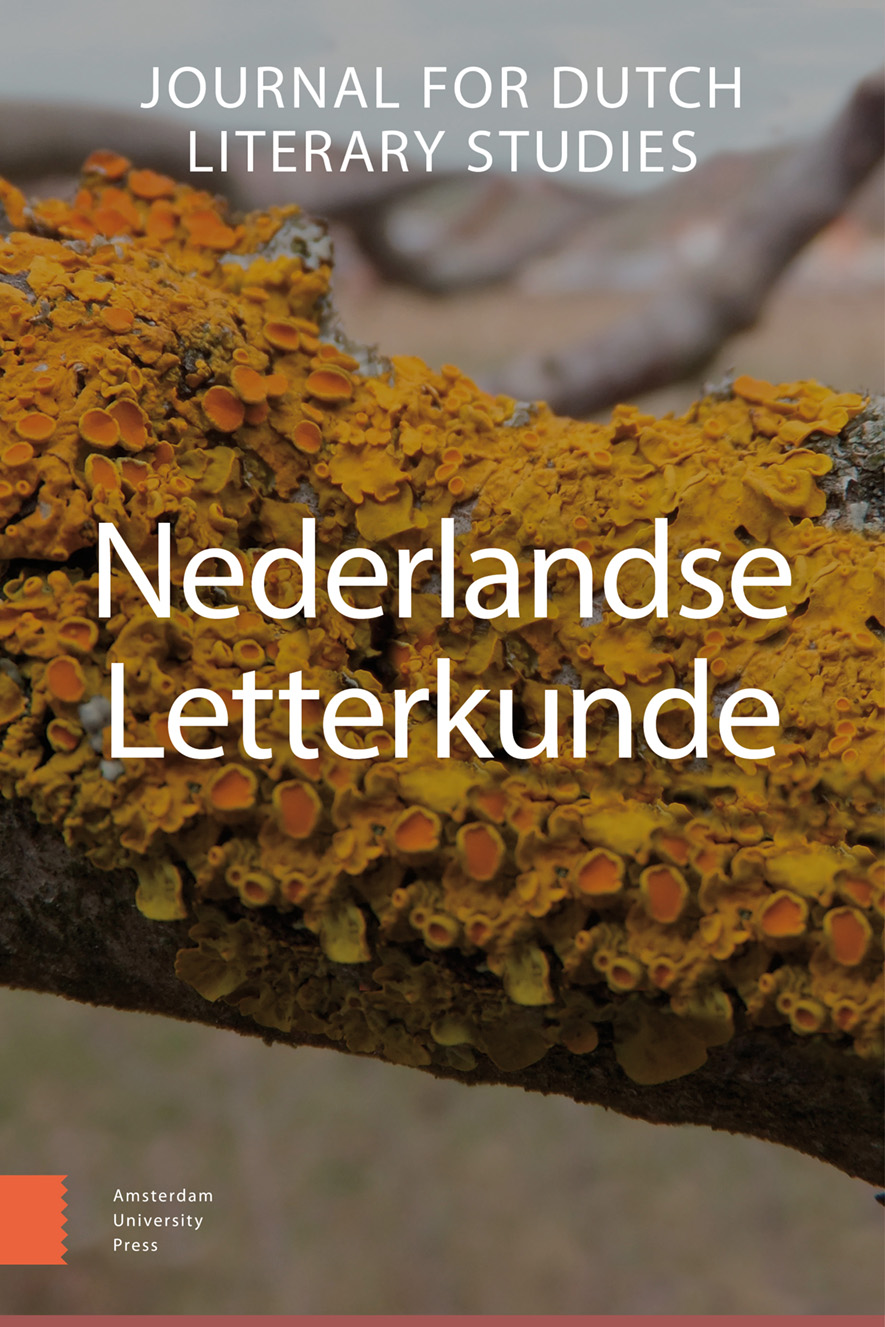- Home
- A-Z Publications
- Nederlandse Letterkunde
- Previous Issues
- Volume 14, Issue 2, 2009
Nederlandse Letterkunde - Volume 14, Issue 2, 2009
Volume 14, Issue 2, 2009
-
-
‘Contraflows’ in de literaire journalistiek? - Een vergelijkende analyse van de aandacht voor niet-westerse schrijvers uit binnen- en buitenland in Franse, Duitse, Nederlandse en Amerikaanse dagbladen, 1955-2005
More LessAuthors: Pauwke Berkers, Susanne Janssen & Marc VerboordIn contrast to most studies on cultural globalization, this article examines the dynamics of cross-cultural exchange between and within (western) nation-states. Through content analysis, we examine the extent and composition of the newspaper coverage given to literary authors of non-western ethnic origin – both foreign and domestic – in France, Germany, the Netherlands, and the United States between 1955 and 2005. Newspaper attention to ethnic minority authors appears to be related to the size of the ethnic minority population, their language proficiency and educational background and the extent to which key institutions in the national literary field are receptive to ethnic diversity, leading to extensive coverage in the U.S. and limited attention in Germany. Newspapers in countries that hold a central position in the literary world-system (United States) appear to be more strongly focused on domestic ethnic minority authors, whereas newspapers in less central countries cover more foreign authors originating in non-western countries, particularly when they have strong geo-linguistic ties with these countries (France). Finally, our results indicate that U.S. ethnic minority authors first gained recognition within the national literary field, and later on, through the centrality of the United States in the literary world-system, also acquired international literary prestige.
-
-
-
Geen prooi voor de sfinx - De lezer en het achttiende-eeuwse embleem
More LessBy Els StronksIn this article, I examine the changing emblematic genre of the eighteenth century. Once functioning as complex riddles for a learned audience, emblems came to be direct moralisations for a large audience during the Enlightenment. The textual and visual allegories which, in combination with the iconological tradition, once served as vehicle for the transfer of knowledge were replaced by different structures of meaning. This process is being studied in the Dutch emblematics of the eighteenth century, revealing various strategies used by poets to apply the literary allegory in a changing context.
-
-
-
‘De heiligst denkbare levenswijze’ - De vrijheid, dan wel gebondenheid van menselijk handelen in A.F.Th. van der Heijdens Mim of de doorstoken globe (2007)
More LessBy J.W.H. KonstThe novel Mim (2007) by A.F.Th. van der Heijden is closely connected with S-ophocles’ Oedipus Rex. This article examines the relationship between the Dutch novel and the Greek drama. It demonstrates that a ‘diegetic transposition’ is involved: Van der H-eijden has transposed the Oedipus theme more or less literally into a late twentieth-century context. His main character Movo / Tibbolt Satink is a latter-day Oedipus who not only kills his father but has three children with his mother into the bargain. The analysis of Mim is brought to a point by asking to what extent voluntary action is involved. Would Movo / Tibbolt Satink have been able to avoid his crimes or was he at the mercy of higher powers? In this connection one could for example think of an unchangeable destiny or of the god Apollo, who plays a key role in the Homo duplex cycle of which Mim is a part. The question elaborated here, i.e. as to whether human actions are free or predetermined, will prove to provide a promising introduction to the work of Van der Heijden.
-
-
-
‘Zo schrijft hij en zo doet hij’ - Literatuur als bewijsmateriaal in strafzaken tegen schrijvers
More LessThis article adresses the question of the institutional position of literature within jurisdiction and of the poetics of jurisdiction with regard to cases in which writers are accused of crimes that have nothing to do with literature. Dutch cases from the 1920s onwards are taken in order to see whether literature is dealt with in these procedures and if so, how it was looked at. This focus will be combined with using the Oscar Wilde-case in specific regards as a mirror for the less documented Dutch cases. It turns out that the standard way of literature within legal decision making is a referential and ethical one focussing on the character of the accused. By this, it reproduces a view that can be dated back into Greek-Roman antiquity – changes towards a more autonomistic poetics within jurisdiction are nowhere to be found. Also a relative growth of institutional autonomy of literature within legal decision making can hardly be discovered in the trials analysed here.
-
Most Read This Month


